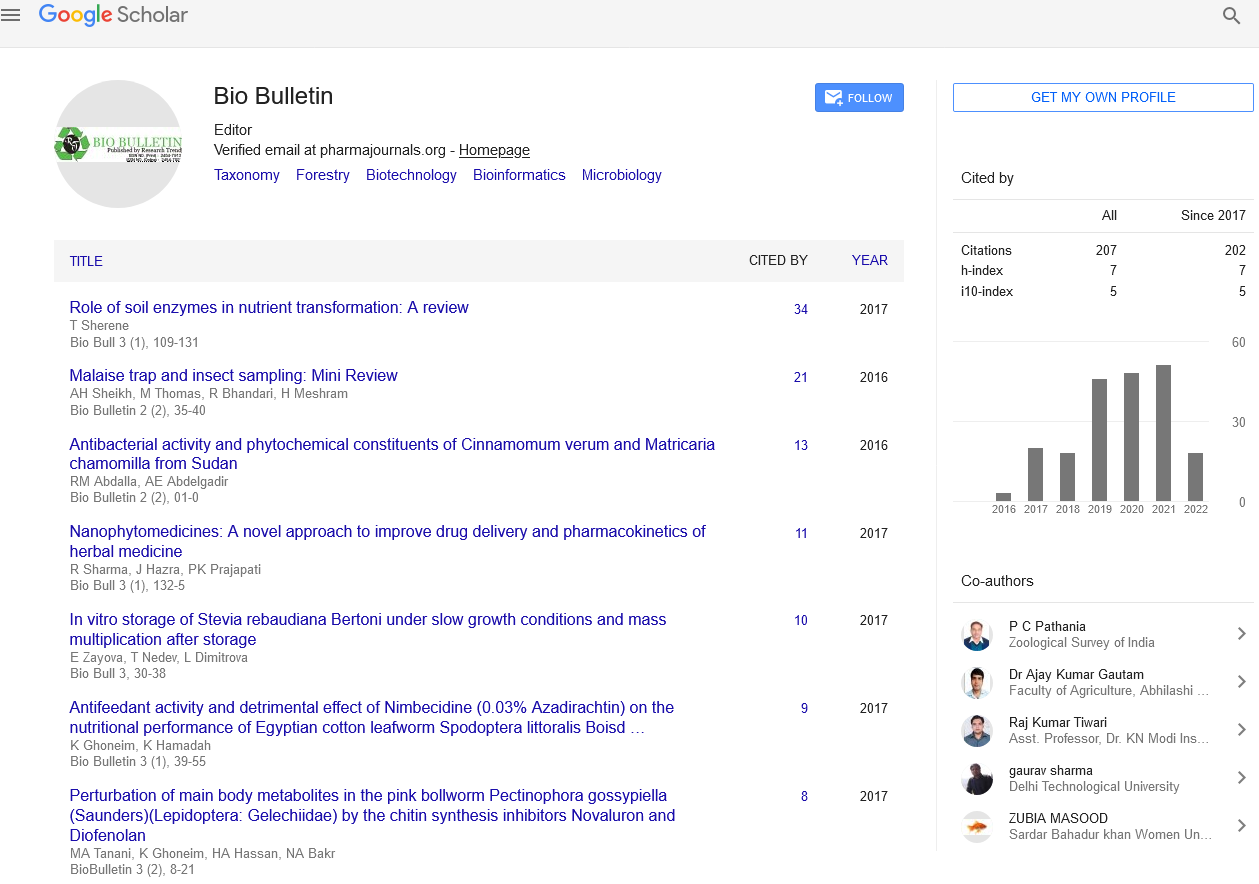Bacterial and Fungal Taxa Characteristic of Soil Communities in Forest
Commentary - (2021) Volume 7, Issue 4
Abstract
Commentary
Forestry, the operation of forested land, together with associated waters and wasteland, primarily for harvesting timber. To a large degree, ultramodern forestry has evolved in similar with natural resource operation. As a consequence, professional foresters have progressively come involved in programs related to the conservation of soil, water, and wildlife resources and to recreation.
Agroforestry is the integration of forests into agricultural systems for the sake to optimize the production and positive effects within the system and reduce negative side effects of farming. It is the identification of economically useful tree genus. It is the patterns and processes of a forest ecosystem and it impacts the economics on forest operation decisions. Forest hydrology assimilates the effects of changes in forest land use on the movement, distribution, and the quality of water in the ecosystem. Forest management makes the overall administrative, economic, legal and social features of forest regulation.
Forest protection comprises both the biotic and abiotic maladies influencing the health of the forest, basically by fungal pathogens, insects, nematodes, parasitic plants and climatic factors and their operation. Forestry analyses the particular challenges of forestry in the world’s regions. Soil microbial diversity has major influences on ecosystem functions and services. However, due to its complexity and uneven distribution of abundant and rare taxa, quantification of soil microbial diversity remains challenging and thereby impeding its integration into long-term monitoring programs. Using met barcoding, soil bacterial and fungal communities over five years at thirty long-term soil monitoring sites from the three land-use types, arable land, permanent grassland, and forest. Unlike soil microbial biomass and alpha-diversity, microbial community compositions and structures were site and land use specific with CAP reclassification success rates of 100%. The temporally stable site core communities included 38.5% of bacterial and 33.1% of fungal OTUs covering 95.9% and 93.2% of relative abundances. Bacterial and fungal core communities and their land-use associations at the family level. In general, fungal families revealed stronger land use type associations as compared to bacteria. This is likely due to a stronger vegetation effect on fungal core taxa, while bacterial core taxa were stronger related to soil properties. The assessment of core communities can be used to form cultivation-independent reference lists of microbial taxa, which may facilitate the development of microbial indicators for soil quality and the use of soil microbiota for long-term soil biomonitoring.
In recent studies, thirty long-term monitoring sites of the Swiss Soil Monitoring Network (NABO) were surveyed over five years, and it has been shown that soil bacterial and fungal communities of different sites remained temporally stable and compositionally distinct. However, that study has focused on community structures and treated OTUs as anonymous entities without assessing their taxonomy. Furthermore, temporal dynamics of soil bacterial and fungal community structures have been assessed but detailed analyses of environmental drivers of community structures among land-use types, and the individual sites have not been provided. Detailed descriptions of habitat associations of bacterial and fungal taxa are, for instance, also needed to develop microbial indicators for biological assessments of soil quality.
Here, bacterial and fungal diversity and community structures at thirty sites of the NABO. Main research goals were to characterize consistently detected OTUs over several years, which allow for a robust assessment of soil microbial communities along with their habitat associations.
Author Info
Pigaud Surna*, Asud Wei and Hong WangReceived: 15-Oct-2021 Accepted: 29-Oct-2021
Copyright:

Google Scholar citation report
Citations : 320
Bio Bulletin received 320 citations as per Google Scholar report
